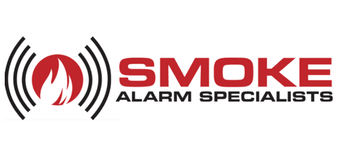Ensuring Home Safety:
Installing Smoke Alarms
Installing Smoke Alarms: Proper Placement and Installation Techniques
In household circumstances just like yours, properly installed and working smoke alarms save lives in Australia every week.
Living comfortably with these vital smoke detecting devices is essential. False alarms are jarring, which often results in alarms being deactivated. Leaving you and your loved ones exposed to fire risk.
Let’s ensure you get them in place properly.


How Many Smoke Alarms Do You Need In Your Home or Apartment
Your floor plan determines this. Particularly the bedroom layout and number of levels in your home.
In a Victorian residence, a 3-bedroom floor plan may require 1, 2 or 3 smoke alarms to satisfy the Building Code.
Smoke Alarm Specialists can assist you in confirming your properties’ minimum standards.
Recommended Areas For Installing Smoke Alarms
Sleeping occupants are most at risk in a fire incident, and smoke alarms should be installed inside and outside the sleeping areas of your home.
Protecting exit paths in multi-level residential properties is also essential.
Installation instructions are included in DIY smoke alarm packaging. These instructions suggest advice on the preferred number and location of smoke alarms.
Don’t throw this away when you unbox your purchase.
Preventing Common Mistakes When Installing Smoke Alarms
Common mistakes include alarm locations :-
- In Kitchens.
- Too close to walls.
- Near air-conditioning units and vents.
- Over stairwells where maintenance is a hazard.
- Above ceiling fans.
- Inside roof spaces.
Protect your home from fire hazards with our Smoke Alarm Installation Experts
Should You Install Smoke Alarms Yourself or Hire a Professional
Australians have a proud heritage of DIY. In many residential property settings, you can install your own smoke alarms systems.
Our major hardware outlets supply a growing range of smoke alarms to satisfy this demand. It is highly recommended that you read consumer reviews on particular makes and models before purchase.
Always keep your purchase receipts.

Pros and Cons of DIY Smoke Alarm Installation
For battery-operated smoke alarms, your product purchase includes all components needed for installation. Accessories include a battery, installation guide, screws and ceiling anchors. All you need is a step ladder and a screwdriver or drill to complete the job.
Hard-wired smoke alarms require installation by a Grade-A Electrician. Most Certified Electricians will source smoke alarms from Electrical wholesalers.
Always request a Certificate of Electrical Safety (COES) for warranty purposes and assurance of compliant smoke alarms.
The Benefits of Choosing Professional Installation
Benefits of utilising our Smoke Alarm Specialist installers include:-
- A professional job warranty. e.g. a 12-month 100% job guarantee.
- Certainty in proper installation and placement.
- Advice on smoke alarm types and smoke alarm prices.
- Fire evacuation plan in your home, based on the floor plan and family circumstances.
- Demonstration of smoke alarm testing and maintenance tasks in your home.
- Advice on how to minimise and manage false alarms.
- Smoke alarm compliance certification and insurance risk mitigation.

Comparing the Costs of DIY and Professional Smoke Alarm Installation
Individuals who have time and practical skills can definitely save money with DIY smoke alarm installation. e.g. battery powered photoelectric smoke alarm prices start as low as $13-15.00.
Using Professionals is best when:-
- Your time is limited.
- You prefer installation guarantees.
- You value custom services inside your home.
- You lack confidence interpreting technical instruction guides
Our Technician’s standard attendance rate starts at $120 ex GST.
Call your Smoke Alarm Specialist installers Now.
Maximising the Lifespan of Your Smoke Alarm: Best Practices for Maintenance and
Testing
Best practices include:-
- Tightening loose mounting screws.
- Taking care when removing the smoke alarm from its base. Plastic can break.
- Taking care when moving large furniture items not to bump or damage them.
- Removing smoke alarms from the ceiling before house painting.

Optimal Timing for Smoke Alarm Testing, Cleaning, and Battery Replacement
Optimal timing includes:-
- Testing the smoke alarm once a month.
- Vacuuming your smoke alarms quarterly.
- Changing replaceable batteries once a year.
- Replacing smoke alarms at 10 years of age.
Proactive Steps to Ensure Your Smoke Alarms Always Function Correctly
Testing your smoke alarms once a month is the best practice to check that they are fit for their purpose.
How Our Professional Electricians Can Aid You in Installing, Inspecting, or Replacing
Smoke Detectors
Our Grade-A Smoke Alarm Electricians are specialist installers.
They can advise on:-
- State Building Codes and smoke alarm requirements.
- Australian Applicable Standards.
- Smoke alarm installation and smoke detector features.
- Hard-wired and wireless smoke alarms.
- Battery alternatives.
- Interconnected smoke alarms.

Protect your home from fire hazards with our Smoke Alarm Installation Experts
